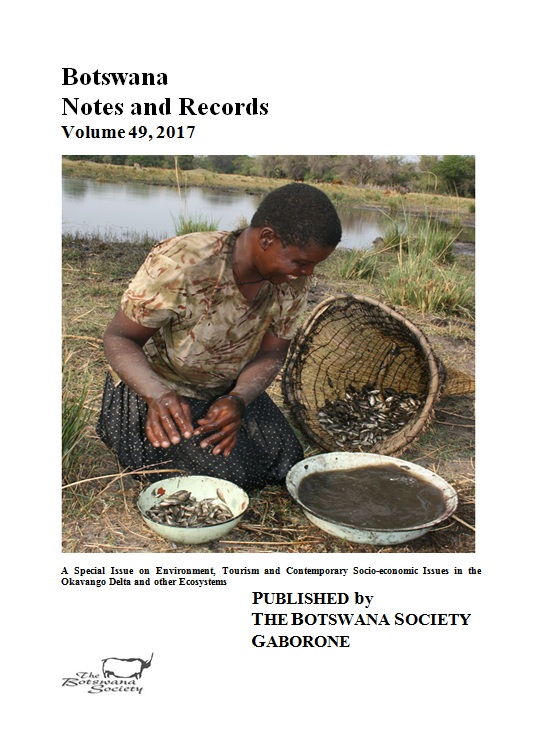The Population Structure of Riparian Tree Species in the Okavango Delta, Botswana: 50 Years of Independence and Conservation
Main Article Content
Abstract
Riparian woodlands in the Okavango Delta play a significant role of removing salts from surface water through transpiration. This function renders surface water healthy to drink by wildlife and the people. Despite their ecological importance, very little is known about the population structure distribution of these woodlands. We attempted to address this limitation by investigating the population structure of selected riparian tree species in the Okavango Delta. Riparian woodland plots were surveyed between February 2012 and April 2013 by recording plant species in 120 plots (20m × 50m) selected randomly at each study site. The most dominant tree species were selected for assessment. Circumference (>15cm) was measured for all individuals in a plot. Individuals of different plant species were categorized into diameter at breast height (dbh) classes of 0-10, 10-20, 20-30, 30-40, 40-50, 50-60, 60-70 and >70cm. Linear regression was used to infer recruitment status of each species. All the species showed stable population structures except for Combretum imberbe and Philenoptera violacea. Croton megalobotrys showed an inverted J-shaped population size class distribution pattern with more individuals in the lower dbh classes. Diospyros mespiliformis had a U-shaped size class distribution pattern with more individuals in the lower and higher dbh classes and few in the middle dbh classes. Syzygium cordatum showed a bell shaped dbh size class distribution pattern with more individuals in the middle classes. Kigelia africana, Philenoptera violacea, Garcinia livingstonei and Acacia nigrescens showed irregular population structures with some dbh classes missing. Combretum imberbe showed a J shaped population size class distribution pattern. The population structures in different tree species may result from the hydrological factors acting on the germination and subsequent growth stages. These results suggest that there is need to protect the seedlings of C. imberbe and P. violacea in exclosures to promote their recruitment into large size classes.
Article Details
Section
SECTION ONE: ARTICLES
